Before the Apollo astronauts reached the Moon and succeeded in bringing back a few hundred kilograms of Lunar rocks to be studied here on Earth scientists had proposed two basic concepts as to how the Earth-Moon system ever came into being. The first idea was that the Moon had originally been a part of the Earth. Back when our planet was still forming and was a molten mass of rock it got a little too big and was spinning a little too fast which caused a big chunk to spin off and eventually become the Moon.
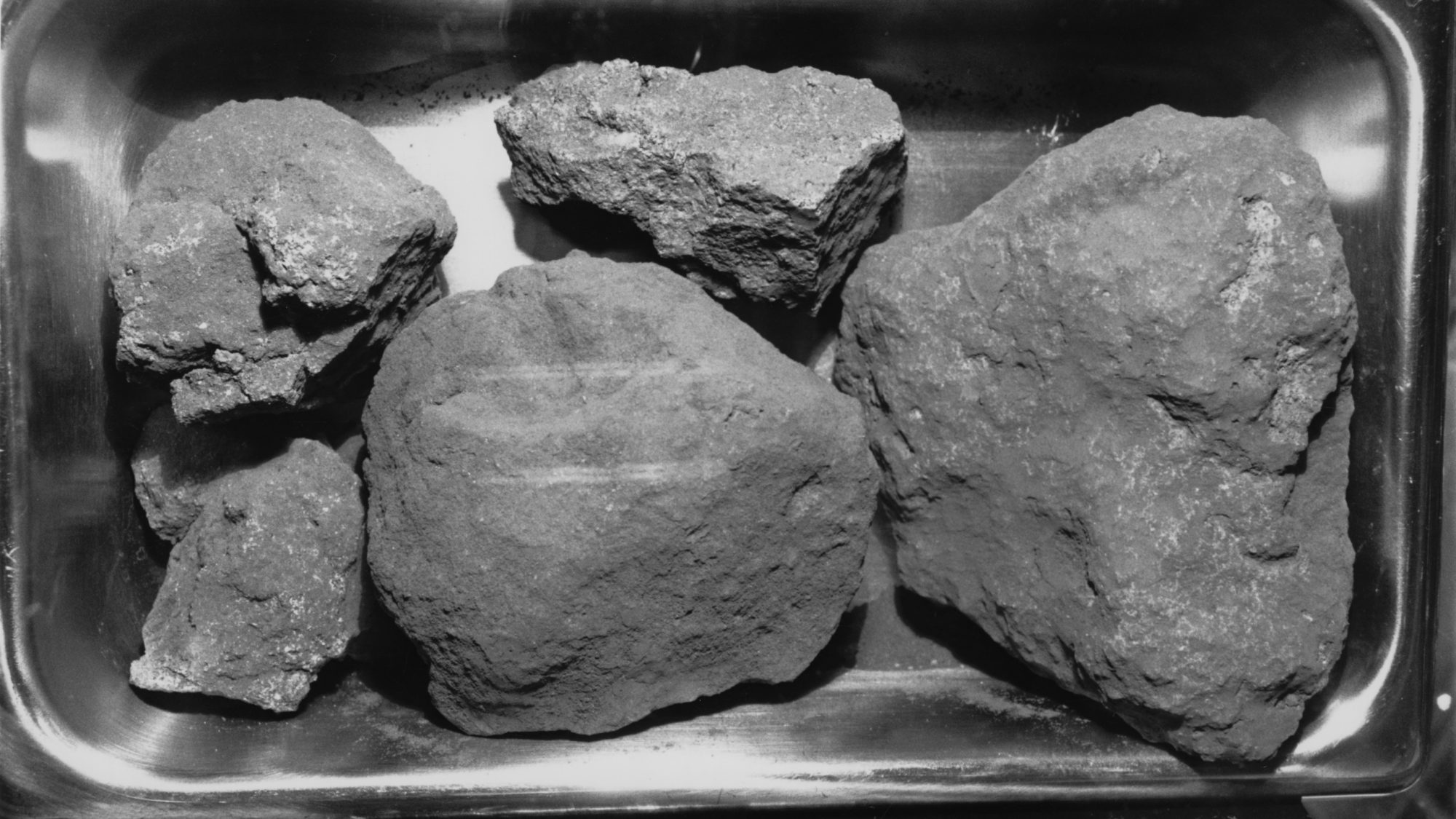
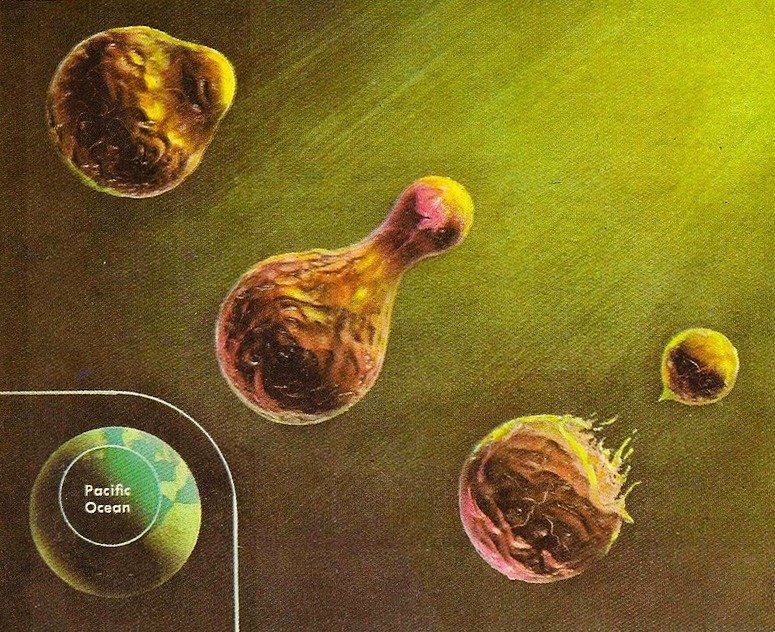
The other idea couldn’t have been more different. In this theory the Moon was never a part of the Earth, it originally came from somewhere else in the solar system, maybe the asteroid belt. Sent on a wandering path by Jupiter’s gravity or some other cause the Moon eventually came too close to the Earth and got captured by our planet’s gravity.
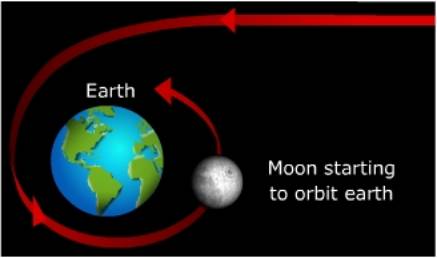
The two theories were so different that geologists thought that once they had some actual Moon rocks to examine they’d certainly be able to choose which theory was correct. It didn’t work out that way because the Lunar rocks brought back by the astronauts looked somewhat like Earth rocks but also like something else. After several years of study a new theory started to form, a more dynamic, even violent scenario for the Moon’s birth.
It works like this, about 4.5 billion years ago the Solar System was just beginning to settle down. The proto-Earth, alone with no Moon, was still a molten mass just starting to cool when another planetoid about the mass of Mars came wandering into our orbit from somewhere else in the Solar System. The collision that resulted between the two bodies must have been cataclysmic and resulted in the Earth absorbing some of the planetoid’s mass while some of the fragments of both bodies coalesced into the Moon. The now destroyed planetoid has even been given the name Theia and the entire concept has come to be known as the Planetary Impact Theory.

After the collision the Moon soon cooled into the dead world we see today so that the Lunar rocks can still exhibit some traces of its origin as two bodies. The Earth however is a much more active body, with moving tectonic plates, a liquid core and volcanism to say nothing of the erosive forces of wind and rain. The dynamic forces of geology have built tremendous mountain ranges that have then been washed into the oceans to form sedimentary rocks, an entire class of rock completely unknown on the Moon. Surely any trace of Theia on our planet would have long ago disappeared because of all the changes on Earth over the last 4 billion years.
Or maybe not! Back in my post of 24 June 2020, I discussed how geologists had discovered regions of denser, heavier material deep within the Earth’s mantel. Doyeon Kim, the University of Maryland scientist who led the research found these anomalies by analyzing the vibrations caused by large earthquakes as they passed through the inner regions of the core and mantel. Because these anomalous regions were made of hotter, denser material the seismic vibrations passed through them with a lower velocity and so Doctor Kim christened them Ultra-Low Velocity Zones or (ULVZs). Two of these regions, each hundreds of kilometers deep and thousands across, are known to exist, one beneath West Africa and the other beneath the Hawaiian Islands in the Pacific.
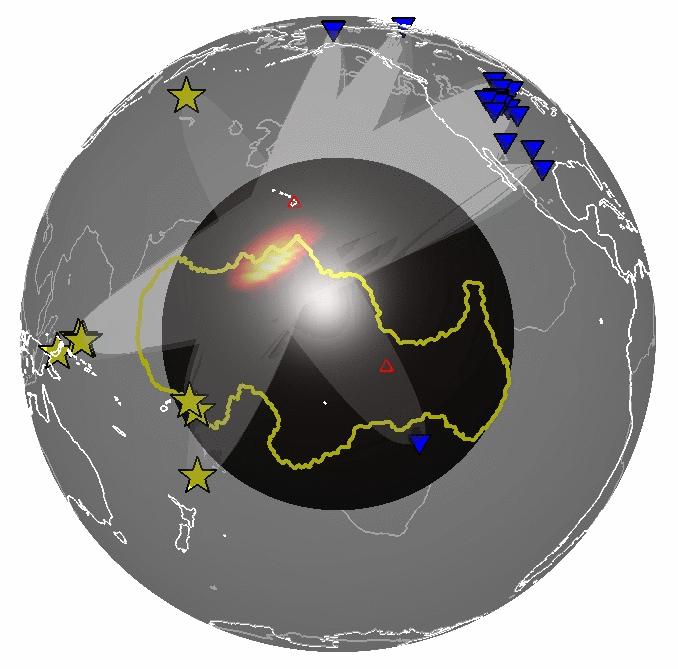
Now geologists at Arizona State University led by Ph.D. candidate Qian Yuan have proposed that these huge masses are actually fragments of the planetoid Theia that have managed to remain intact deep inside the Earth for more than four billion years. A paper detailing their hypothesis has been presented at the 52nd Lunar and Planetary Science Conference in March of 2021.
As evidence for their theory the geologists point to not only the ULVZs difference in density but also to certain chemical signatures indicating that the material making up the ULVZs is at least as primitive as the Theia impact. Qian Yuan and his colleagues are now preparing a formal paper to be submitted to the journal Geophysical Research Letters.
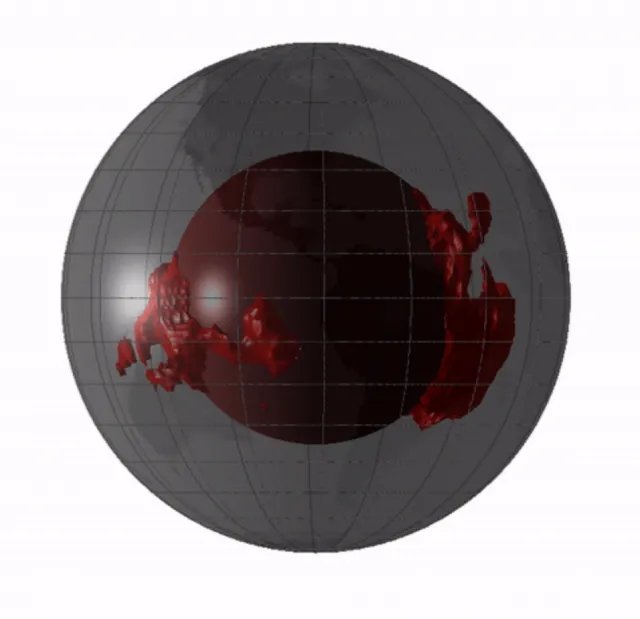
Think of it, NASA and other space agencies are spending billions of dollars to send probes millions of kilometers in order to study alien worlds when there may be immense pieces of another planet just a couple of thousand kilometers beneath out feet. Of course the problem is that’s a couple of thousand kilometers of solid rock you have to get through in order to obtain any samples.
